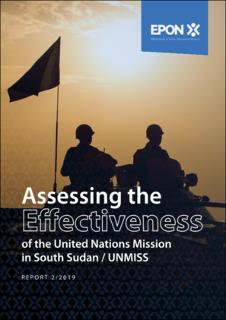| dc.description.abstract | The report focuses on the most recent period of UNMISS’ mandate (2014-18), aiming to provide a “snapshot” of the mission’s work across its four main mandate areas: the protection of civilians (PoC), facilitation of humanitarian delivery, promotion of human rights, and support to the peace process. As a large, multidimensional peacekeeping operation – with 17,000 troops, 2,000 police and 2,000 civilians – UNMISS has been provided with significant resources and an extraordinarily ambitious mandate. Assessing the match between resources and mandate, and the ways the Mission has adapted its approaches to be effective in extremely challenging circumstances is a key objective of this report. Throughout its existence, UNMISS has been part of a much broader regional and international constellation of actors working to stabilise the country and encourage conflict parties to enter into a meaningful peace process. In many cases, UNMISS has played a limited supportive, coordinating, or otherwise indirect role in the overall trajectory of the country; in others, it is a central actor in the eyes of the people of South Sudan. This presents a challenge to any assessment of the Mission because, at most, UNMISS can be considered one contributor among many working together to end the civil war and lay the foundations for durable peace. Causality in these settings is difficult to establish. Nevertheless, drawing on the substantial data and analyses available, and interviews with more than 260 people in South Sudan and the region over several weeks, this study presents a set of evidence-based findings about the impact of the Mission and the factors that have enabled and inhibited the fulfilment of its mandate. | en_US |

